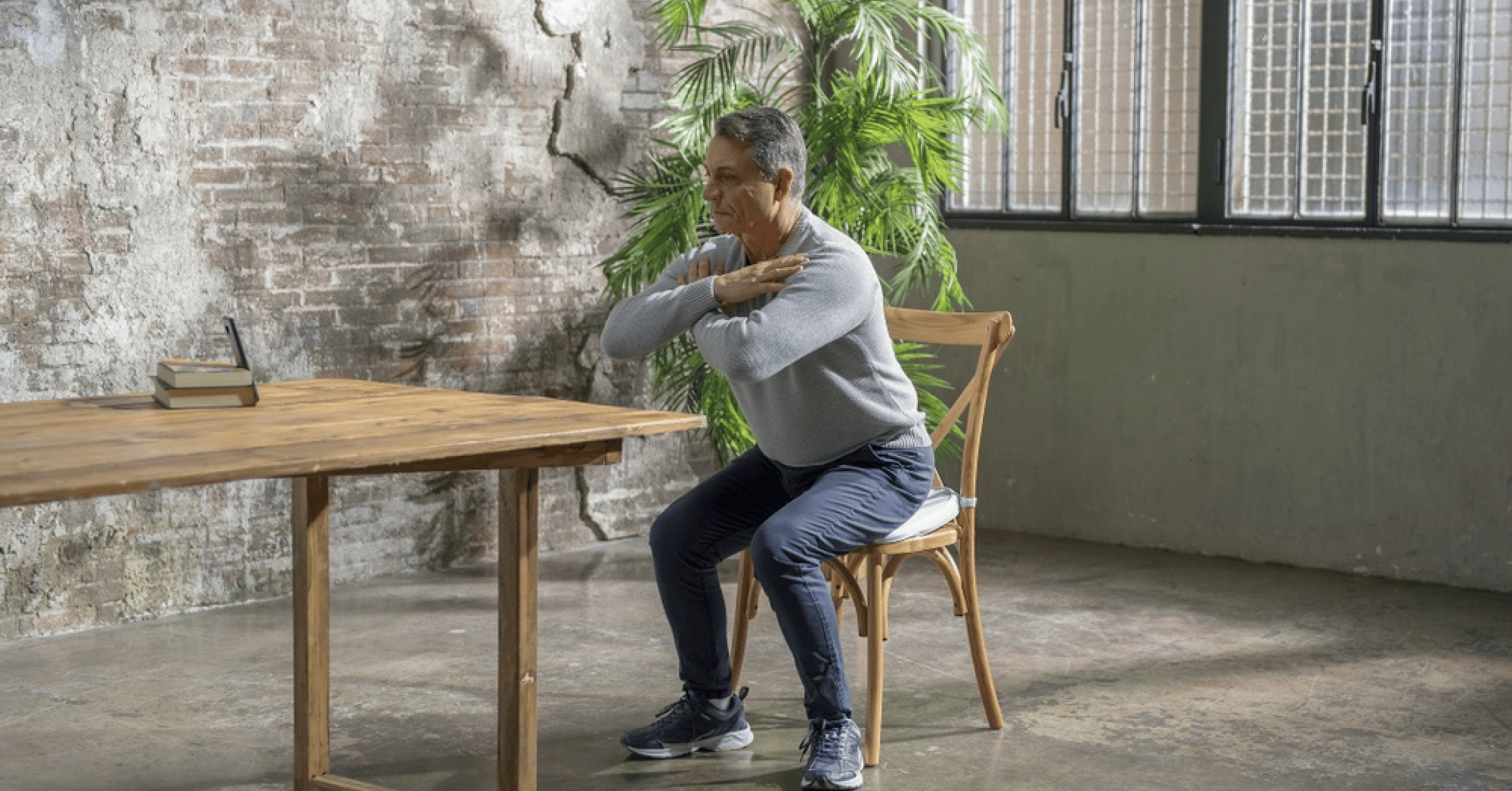Four Exercises to Treat Osteoarthritis at Home During Covid-19
March 30, 2020

As Covid-19 spreads, individuals over 70 are encouraged to stay home as much as possible. This poses a significant challenge for osteoarthritis patients, many of whom are in high-risk groups. Hip and knee surgeries, as well as in-person osteoarthritis programs, have been canceled or postponed due to healthcare system reprioritizations. However, digital treatment options with clinical evidence now allow osteoarthritis patients to perform tailored physical therapy from the comfort of their homes.
“It will be crucial for this group to stay active, even if they have to do so within their own homes.” – Emelie Blennow, Physical Therapist at Joint Academy.
The Importance of Staying Active
A large number of people suffer from osteoarthritis, with the majority being 45 years or older—one in four individuals in this age group has the diagnosis. Every year, thousands of hip and knee replacement surgeries are performed due to osteoarthritis, and many patients participate in structured osteoarthritis programs. Even before Covid-19, wait times for surgery and treatment were long, and now, due to cancellations and postponements, they are expected to become even longer.
With older adults being advised to avoid large gatherings and reconsider visits to healthcare facilities, many patients find it difficult to continue their treatment if it relies on in-person visits. This is especially concerning for chronic conditions like osteoarthritis that require continuous treatment and high adherence.
“It will be incredibly important for this group to stay active in the coming months. Whether they were preparing for surgery or participating in an osteoarthritis program, many will find their usual treatments delayed. This can lead to inactivity, which is the worst possible outcome for osteoarthritis patients who require ongoing treatment and high adherence.” – Emelie Blennow
Many older adults are already using digital treatment, and research shows that people with chronic conditions respond well to digital treatment programs. A recently published long-term clinical study demonstrated that digital osteoarthritis treatment reduced patient pain by 50% and improved physical function by 43%.* Digital healthcare solutions provide an opportunity to relieve traditional healthcare systems, which are currently under immense pressure, while ensuring that patients continue to receive treatment.
Digital treatment programs can also improve adherence, as patients receive daily reminders to complete their exercises. For those now spending more time at home, flexibility is a major advantage of digital treatment—patients can perform their exercises anytime, anywhere.
“A few simple exercises per day at home have been clinically proven to be effective.” – Emelie Blennow
Four Osteoarthritis Exercises You Can Do at Home
1. Leg Extensions – for Knee Osteoarthritis
Sit upright on a chair with back support. Your knees should be bent at approximately 90 degrees with your feet on the floor. Lift one leg and straighten your knee as much as possible, then slowly lower it back to the starting position. Repeat 15 times, then switch to the other leg.
2. Standing Knee Bends – for Knee Osteoarthritis
Stand upright. Place a chair with a backrest in front of you and hold onto it for balance. Lift one leg and bend your knee backward to 90 degrees, then slowly lower it to the starting position. Try to minimize thigh movement during the exercise. Repeat 15 times, then switch to the other leg.
3. Single-Leg Stand – for Hip and Knee Osteoarthritis
Stand upright and place a hand on a chair, table, or wall for support. Keep your hips aligned as you lift one knee as high as possible. Hold for 10 seconds before slowly lowering it back down. Avoid putting weight on your supporting hand; it should be used for balance only. To challenge yourself, release your hand and balance without support. Ensure your weight is evenly distributed on your foot and avoid leaning forward or backward. Take breaks as needed. Repeat three times per leg.
4. Bird-Dog Exercise – for Hip Osteoarthritis
Start on all fours with your hands directly under your shoulders and knees directly under your hips. Keep your back straight and extend one leg straight behind you as far as possible. Engage your core by pulling your belly button toward your spine. Return your leg to the starting position. Press into the floor with your hands to prevent your shoulders from dropping. The wider your hands and knees are placed, the better your balance. Repeat 15 times, then switch to the other leg.